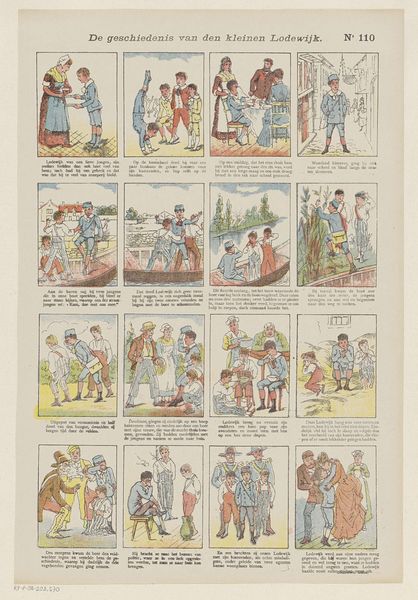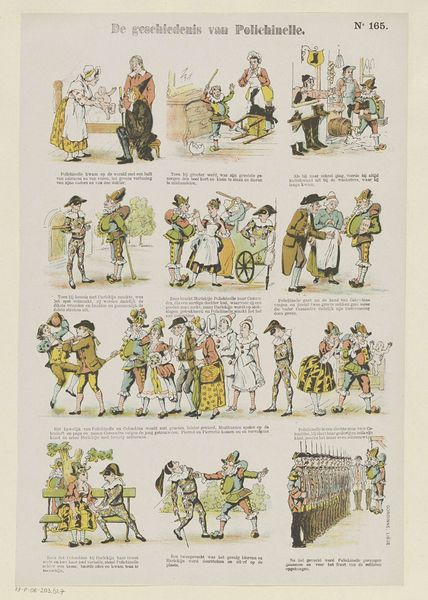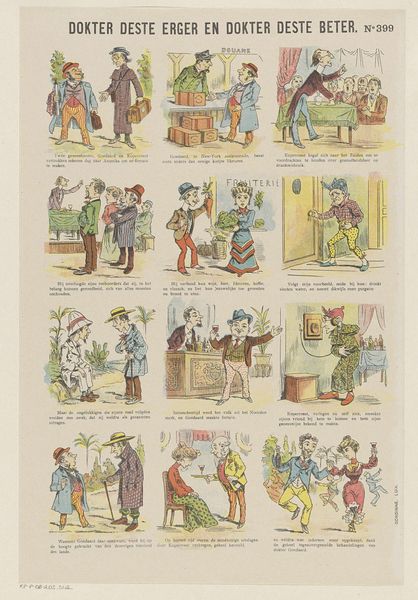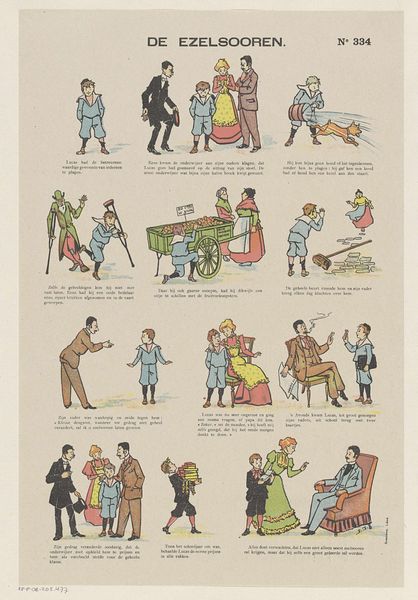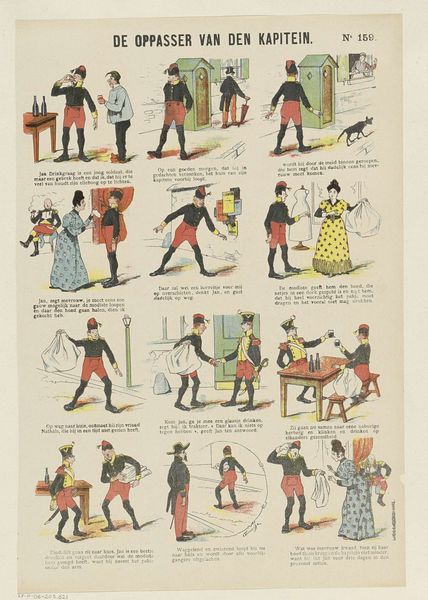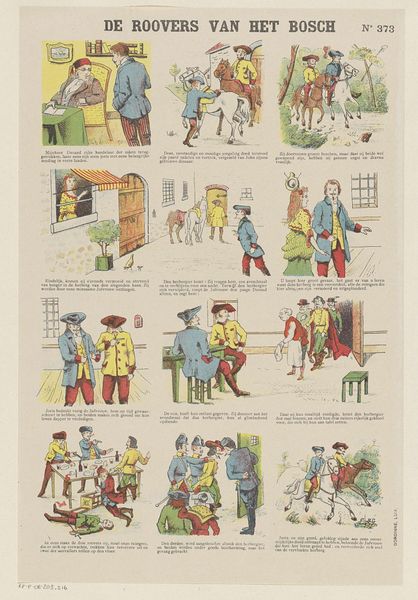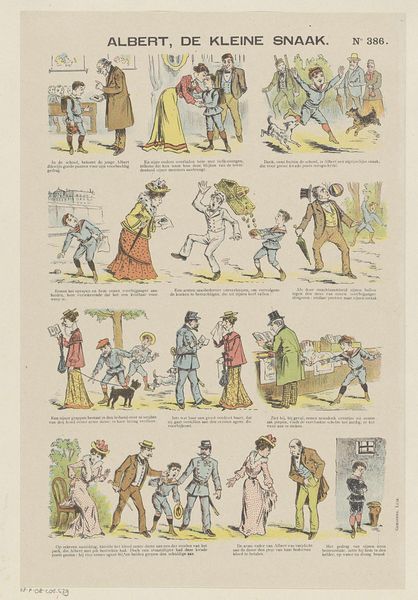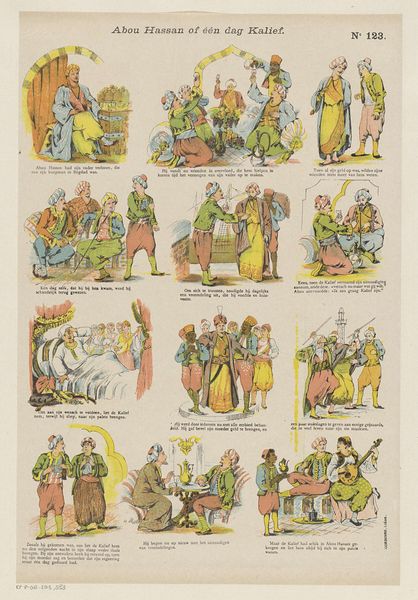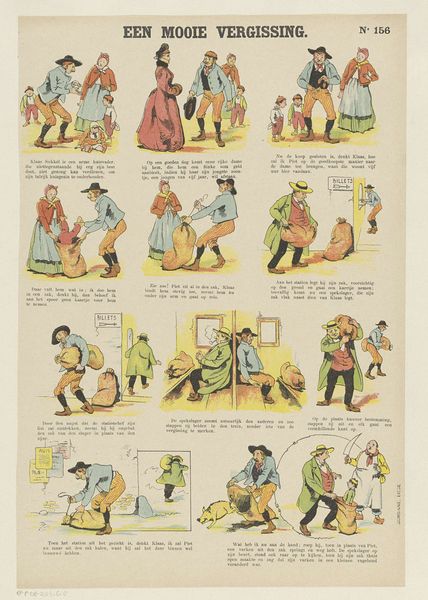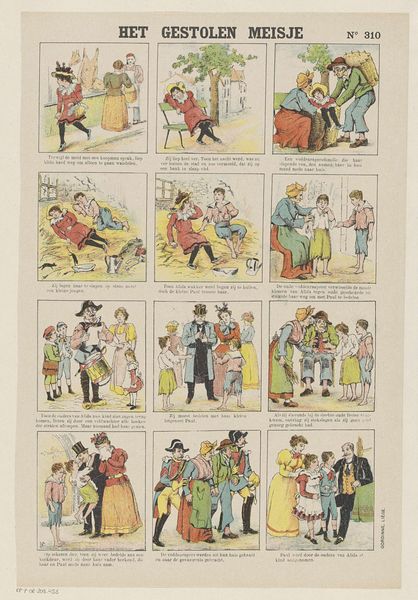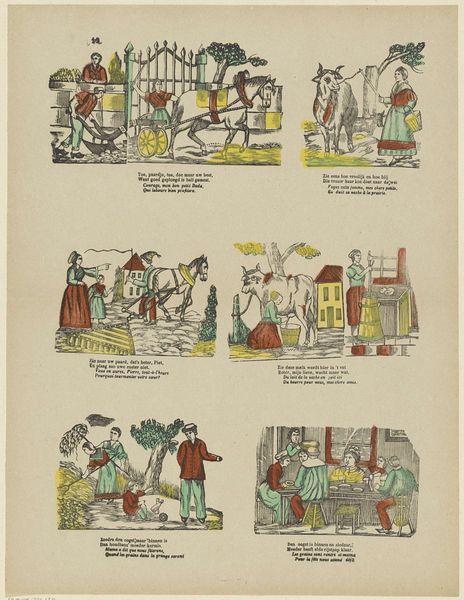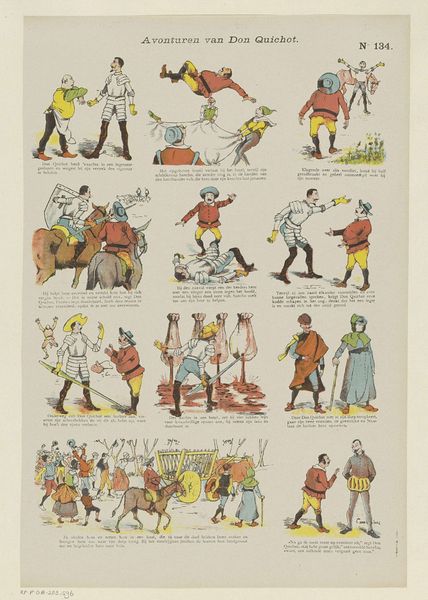
#
narrative-art
# print
#
comic
#
genre-painting
Dimensions: height 400 mm, width 272 mm
Copyright: Rijks Museum: Open Domain
Curator: Editor: So, here we have "Vanity is a Defect," or "IJdelheid is een gebrek" by Lamouche, created sometime between 1894 and 1959. It’s currently at the Rijksmuseum. The comic-strip style narrative seems humorous, yet I am curious about its cultural significance. How would you approach understanding this print? Curator: Let’s look at the materiality first. As a print, consider the mass production aspect, which connects it to broader patterns of consumption. Note also how it uses techniques of line and color printing typical of its time for mass appeal. Who was the intended consumer and how might its themes relate to the working-class experiences of labor or economic shifts happening at the time? Editor: That is interesting – so instead of just focusing on what the artist was "trying to say," we look at how this comic relates to broader social and economic contexts? Curator: Precisely. The division of labor is depicted right on the paper; the artist creates the image to be copied en masse by factory printing presses for consumption by working men at the barbershop. What class dynamics do we see illustrated in the relation between the barber and customer? Editor: Okay, I see how the image shows this tension through a rather humorous lens. So even something seemingly simple, like a comic about vanity, can show relationships that speak volumes about historical labor? Curator: Absolutely! Consider this piece within a larger framework of production and distribution, linking it to both the physical materials of art-making and broader patterns of industrialisation during that period. Editor: I’ll never look at printed art the same way. Seeing how material conditions and the means of production are depicted and implicated into its broader social impact is exciting. Curator: Indeed, that’s the beauty of engaging materially!
Comments
No comments
Be the first to comment and join the conversation on the ultimate creative platform.
